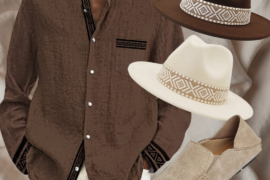The allure of luxury brands like Gucci, Louis Vuitton, Balenciaga, and Hermes transcends socioeconomic status. It’s not just the rich and famous that covet these brands, but surprisingly, they’ve also penetrated the preferences of lower-income consumers. Ever wondered, why are luxury brands so popular among various income brackets, especially the lower ones? To understand this, we need to delve deep into the underlying psychology of consumers and how luxury brands have brilliantly tapped into this understanding to curate their product categories.
 Luxury brands have meticulously crafted two different product categories to cater to their diverse consumer base. The first category is all about accessibility and visibility. Here, you’ll find the more affordable clothing range with prominent logos that are very recognizable. This part of their offering is designed to cater to consumers who aren’t exceptionally wealthy but still wish to enjoy the prestige that comes with wearing a high-end brand.
Luxury brands have meticulously crafted two different product categories to cater to their diverse consumer base. The first category is all about accessibility and visibility. Here, you’ll find the more affordable clothing range with prominent logos that are very recognizable. This part of their offering is designed to cater to consumers who aren’t exceptionally wealthy but still wish to enjoy the prestige that comes with wearing a high-end brand.
This conspicuous consumption is a sociological concept where individuals, particularly from lower socioeconomic classes, tend to purchase goods mainly to display wealth and social status. Luxury brands, with their in-depth understanding of consumer psychology, have capitalized on this concept. They’ve learned that these consumers have a compelling need to project their value system and social standing, even if they aren’t particularly affluent. The tangible proof lies in the flashy clothes bearing the coveted logos of Gucci, Louis Vuitton, and the like.
On the flip side, luxury brands have a second category reserved for the ultra-wealthy. This category is characterized by simplistic, understated clothes where the brand’s identification is not immediately apparent. Why is this so? Simply put, the ultra-wealthy have no compelling need to prove their wealth or flaunt their luxury purchases. They tend to value exclusivity and subtlety over blatant brand showcasing. Therefore, brands like Hermes and Balenciaga create collections that suit this discreet taste, reinforcing the prestige of the brand without the need for ostentatious logos.
In a nutshell, luxury brands have effectively adapted their product ranges to suit the psychology of their customer demographics. They’ve understood that ‘luxury’ doesn’t necessarily mean the same thing for everyone. For some, it’s a statement of identity, a way of showing off their perceived social standing. For others, it’s an exercise in subtle exclusivity, a way to enjoy the finer things in life without needing to broadcast it to the world.
The genius of luxury brands is in recognizing these distinct needs and delivering to them with precision. This strategy holds essential lessons for businesses across industries. Understanding your customers’ psychological needs and aspirations is key to crafting a product or service that appeals to them. In doing so, you can create an offering that resonates with your target market, ultimately succeeding in selling not just a product but an experience.












